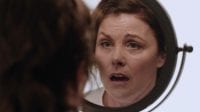Welcome back to Listening Post Alpha! For this round of Superstitions and Folklore, I’ve decided to focus on elements that are seemingly exclusive to the Return, or which figure less heavily in the Original Series.
For the other installments, follow the links provided: Part 1 Part 2 Part 4
DON’T LET YOUR LUCK RUN OUT 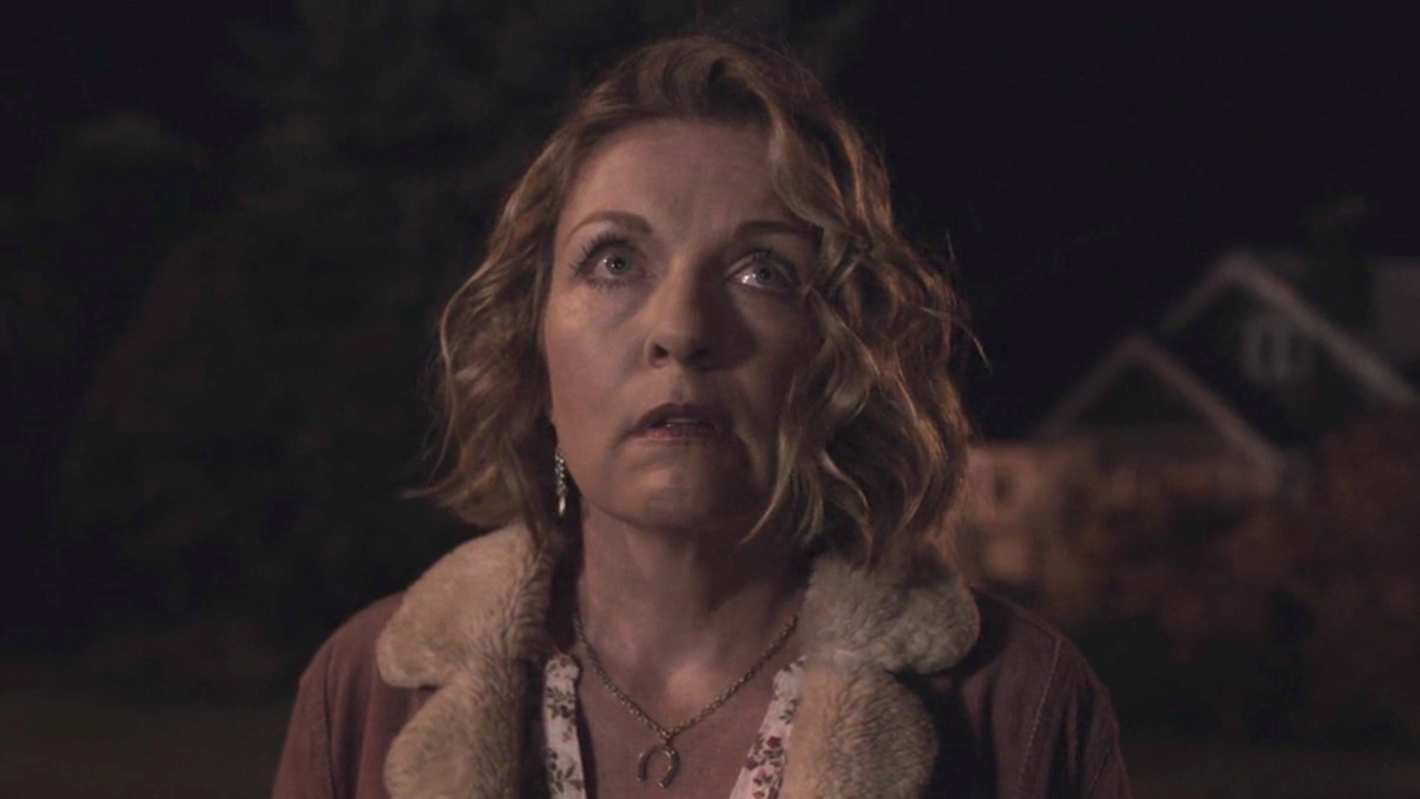
As far as I can tell, there is one and only one distinct horseshoe in the Return, and likely all of Twin Peaks. It lays, unobtrusively around the throat of one Carrie Page, and it’s hanging, open side downwards. For ages, the horseshoe has been a symbol of good luck and protection, but the particulars vary with culture and region.
Some cultures have it that it is only good luck if the horseshoe is placed open side up, to hold all the luck in, as it were, instead of allowing it to run out. Another interpretation holds that the horseshoe should be open side down, in order that the luck and protection fall onto the bearer or recipient.
In older traditions, the prongs upwards represented the seat of masculine powers and the prongs down, that of the feminine. It is also overall considered to be protection against the ‘evil eye’ and vengeful spirits because of its ‘u’ shape. Additionally, the horseshoe is associated with both the sun and the moon, dependent upon the cultural origin.
Generally, horseshoes were held together with seven nails, a significant number in the world of folklore and superstition, as well as that of Twin Peaks. Carrie Page’s necklace shows a total of 7 rivets.
The question is, with her horseshoe necklace facing down is pouring good luck onto her, and protecting her (from what?) or, if it’s all run out and she has nothing but bad luck left.
IT’S THE SPIRITUAL MOUND, TAMMY
Palmistry figures into The Return fairly heavily, with Gordon and Tammy’s discussion of the ‘Spiritual Finger’ as it relates to Mr. C’s greatest give away – his backwards speak: “It’s yrev very good to see you again old friend,” As Gordon demonstrates on Tammy’s hand, this sentence contains ten words and, working left (the most important hand in palmistry) to right, it falls on the left hand ring finger. This finger, as discussed the my previous installment, is the finger upon which most characters wear the owl cave ring. It is the finger of commitment everlasting, and the spiritual implications are strong.
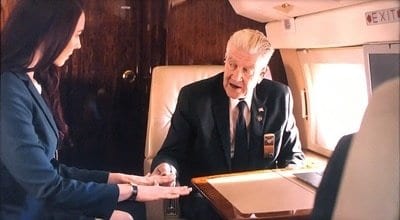
I spoke to a friend, N., who is a practitioner of palmistry and she was able to share with me some information regarding this finger. Seeing as palmistry is so particular from person to person, this is a difficult element to discuss. The finger is associated with Apollo, and is called such as is the ‘mount’, which is the rounded fleshy portion on your palm beneath the finger it corresponds to, making the ‘Spiritual Mound’ the Mount of Apollo. Not much can be said about what the Apollan finger and mounts correspond to, as we can’t ‘see’ Doppelcooper’s hand to read it, but that’s not really what is important here. Rather, the conjunction of this finger being connected to a person’s innate spirituality, the owl cave ring’s usual position there and the interesting case of Doppelcooper’s fingerprint.
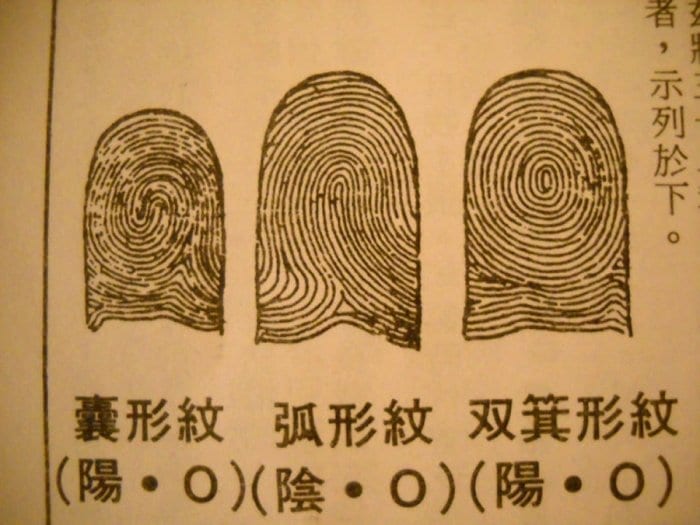
Fingerprinting, I’m sure most will be surprised to find, originates in palmistry. The study of fingerprints, called Dactylography, originates in Asia, specifically in China, where it is found in use as the official ‘seal’ of emperors in the Qin Dynasty (221-206 BC). Doppelcooper’s Apollo fingerprint has to be reversed. Just like with his unassuming yrev, the fingerprint gives away the truth of his identity as a Doppelganger – a mirror image and not the real thing.
If only someone could get a look at his hands, that would make for some yrev, very interesting readings.
ALL ALONE IN THAT HOUSE
Widowhood is associated with a variety of different superstitions. Back when a hasty remarriage after the death of a spouse was considered severely taboo, it was also the general belief (in many cultures, though not all) that the spirit of a dead person remained tied to the land of the living, primarily the people and places to where the person was tied whilst still alive. Generally this concept was prevailed against by hanging sheets over the mirrors in the house (most person passed in that day and age while in their home), because it was feared that the spirit would inhabit the mirror. Twin Peaks certainly has it’s own spin on this concept, and this site has already seen the publishing of a few articles about the Palmer house and its connection with ghosts. The reason this is relevant is simply because it was believed that a remarriage too soon after the death of the husband would have his spirits haunting not only the house but the wife and new husband.
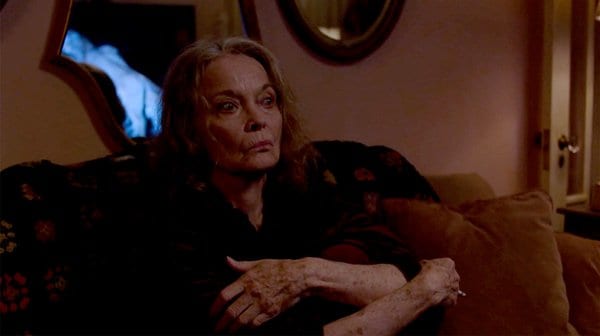
Sarah Palmer is certainly haunted by something, and while I also believe that her house is a conduit or in-between space for the otherworldly, it’s more than that. Leland didn’t die in the house, but the ghosts remain. Her widowhood contributes to the hauntedness of her visage, the social ostracization she receives, or perceives that she ought to receive. She lives alone in the house, without anyone – the ghosting memories of husband, daughter, niece are left hanging like a veil around her. Her association as the wife of rapist, daughter molesting murderer Leland and mother/aunt of the victims serves to taint any of her social interactions for the rest of her life, potential inhabiting spirits aside.
THAT THERE’S MARS
In many ancient cultures from Asia to the Americas pointing at the stars was in bad form because the stars (and planets) were considered to be supernatural entities, sometimes good, sometimes bad, who were watching the people of earth. By pointing, one risked their wrath for a number of reasons, which ranged from the fear that the pointer would put out the eyes of the being, to the fear that calling them out so impertinently would cause them ill humor.
All that being said, I find it amusing that it is Chantal who points to the stars, and in particular, the planet Mars. Mars, of course, being the God of War fulfills this element of the heavens as housing supernatural beings. Additionally, considering the particular avenue of the Hutchins’ demise – a violent, bloody shootout – it is apropos that Mars himself would be unhappy with her rude gesture and thus send them an end befitting his glory.
I DON’T REMEMBER MUCH OF ANYTHING ANYMORE
In my compendium of Folklore and Superstitions, De Lys says that “It is generally agreed among psychologists that we never really forget anything, but what happens is that we drop things out of our conscious memory.” This is certainly true for Twin Peaks. Many characters in the show, but most often actually living within the town, seem to have fallen victim to a plague of memory loss. Certainly there are several who instead of forgetting things recall them – think Bobby when he sees Laura’s picture, and Ben when he reminisces about his old green bike – but the majority specifically mention the inability to recall some key piece of information. Tina’s daughter can’t remember if her Uncle was present with her when a bloody Billy ran through their house. Diane’s memories are suddenly returned at the sight of a sinister smiley face in the text from Doppelcooper. Gordon and Albert have forgotten and then recall gradually the visit from Phillip Jeffries during Fire Walk With Me. Audrey can’t remember how to get to the Roadhouse. And the members of the sheriff’s department can’t recall what happened after they arrive at Jack Rabbit’s Palace. Most iconically in the original run, Dale forgets the name of Laura’s killer. As the Nine Inch Nails song performed in part 8 tells us, our characters can’t remember much of anything, anymore.

What this is down to could be any number of things, but memory and forgetfulness have their own set of superstitions too. Strangely enough, a certain level of forgetfulness was once assumed to be followed by day-long bad luck. This is most likely because a person who is typically forgetful will probably continue to forget things. A simple enough assessment today, but the associate certainly makes for some interesting results. Cooper tells us that 10 is the number of completion, an important number to be sure. One suggestion to counteract a memory lapse was to count up to ten. Ten being twice five, a sacred number in certain parts of ancient Asia and occasionally used as a directional number, ie West, East, South, North and Center. And, like in Twin Peaks, ten fingers on two hands which is 5 on each.
Additionally, the concept of ‘returning to a location’ where something has been forgotten in order to remember the thing has an interesting superstitious history, especially where Twin Peaks is concerned. Bad luck was thought to follow someone who went back, and thus it was considered a poor choice to make in an attempt to recall lost information (I do this all the time, and it works mostly because our brains make connections with things we see and lead us to think of things we had before). Some examples that led to this believe appear in Christian mythos in the form of Lot and his wife, as well as Classical mythos, one of which has already been references thoroughly since the referential scene that ties part 17 to part 18, that is to say the story of Orpheus and Eurydice. Lot tries to save his wife from the destruction of the condemned cities of Sodom and Gomorrah. She looks back and, in her moment of weakness, witnesses the destruction and is turned into a pillar of salt. Orpheus, for those who don’t know, attempts to save his lover, Eurydice, from Hades. He is charged not to look back, or she will be eternally condemned. Like Cooper, Orpheus glances back at the woman he is attempting to save, and in the process, she is lost forever.
REMEMBER 253
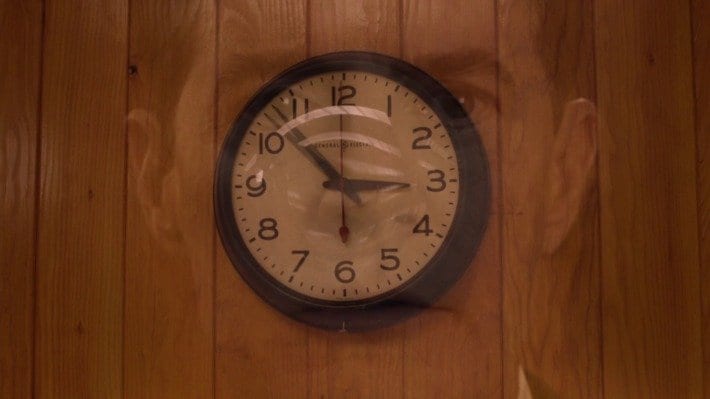
In Part 17, when Cooper’s face is superimposed over the screen, the wall clock of the sheriff’s department is shown, the minute hand flickering between 2:52 and 2:53. Time has been put on pause. It’s not stopped, but neither is it started. Or, it’s both at the same time, which quantum mechanics allows for. Additionally, upon rewatch, I noticed that this same thing happened to the clock in Doppelcooper’s car before and after the crash. A variety of explanations have been put forth regarding the moment in part 17. Dale is lucid dreaming, Dale starts to alter time, Dale is still in the Lodge and now knows it. Dale this, Dale that. We don’t know exactly what’s happening there, but we do know the circumstances of what’s happening in the car crash scene – Doppelcooper’s life on our earth is supposed to be coming to an end.
A commonly experienced phenomenon is the curious coincidental stopping of clocks at the death of a person. The superstition works in this situation because entering the Black Lodge/Other Dimensional Spaces leads to the essential end of that person’s life on earth – not necessarily death, but not life either.
What if, as these moments are the precipice of a major occurrence, the clock hovers between moments because our time has not yet determined the outcome? Like Schrodinger’s cats, Dale or his Doppelganger are in the box with the poison, but whether or not they will survive is still yet to be determined. And until one or the other can be determined, both are not only likely, but true. Thus, Schrodinger’s theory of infinite universes. But that’s not the point here. The point is rather that until a destination, or a final outcome has been irrevocably determined, time cannot move forward or backwards, and Dale, whose life is ultimately the outcome of these moments, remains both dead and alive at the same time.
“I am dead, yet I live,” Laura says. Dale has to make a choice in this scenario – ostensibly, return to the Red Room, try to save Laura/fight Judy and ‘perish’ in his life as Dale Cooper as a result, or, continue to live the life he’d already carved out for himself, no matter how dark. We know what Cooper chooses. Perhaps, the clock stops.
PEANUT SHELLS AND GREEN ONIONS
For a bit of fun, I looked into superstitions that surround sweeping, if only so I could mention the infamously protracted sequence here. While I found nothing of direct connection, it’s worth mentioning that it is apparently bad luck to sweep something out of your house unless you’ve swept something in first, or you’ll lose your good luck. Perhaps this explains some of the more unsavory aspects of the going ons at the Roadhouse, though never depicted on screen.
Stay Tuned Next Week for the Fourth and final installment in the Superstitions and Folklore Series, covering Prophecy, Spiritualism and a wide variety of Numbers!
http://www.ancientpages.com/2016/03/04/fascinating-ancient-history-of-fingerprints/
A Treasury of American Superstitions, by Claudia de Lys, Copyright MCMXLVIII

